Seagate: Hard Disk Drives Set to Stay Relevant for 20 Years
by Anton Shilov on December 18, 2015 10:00 AM EST
The very first hard disk drives (HDDs) were demonstrated by IBM back in 1956 and by the early 1980s they became the dominant storage technology for all types of computers. Some say, hard drives are no longer relevant as solid-state drives offer higher performance. According to Seagate Technology, HDDs will remain in the market for at least 15 to 20 years. In a bid to remain the primary bulk storage device for both clients and servers, hard drives will adopt a multitude of technologies in the coming decade.
“I believe HDDs will be along around for at least 15 years to 20 years,” said David Morton, chief financial officer of Seagate, at the Nasdaq 33rd Investor Program Conference.
Sales of HDDs Decrease, But Technology Keeps Evolving
Sales of hard disk drives have been decreasing for several years now. Total available market of HDDs dropped to 118 million units in the third quarter of 2015, according to estimates by Seagate Technology and Western Digital Corp. By contrast, various makers of hard drives sold approximately 164 million units in Q3 2010, the two leading manufacturers claim.
Shipments of HDDs decrease due to a variety of factors nowadays, including growing popularity of solid-state drives (SSDs), drop of PC sales, increasing usage of cloud storage and so on. Nonetheless, HDDs remain the most popular data storage technology, which is also the cheapest in terms of per-gigabyte costs. While SSDs are generally getting more affordable, high-capacity solid-state drives are not going to become as inexpensive as hard drives any time soon. As a result, HDDs will remain a key bulk storage technology for a long time.
To stay relevant in the long term, hard disk drives need to keep increasing their capacity. Last year ASTC (Advanced Storage Technology Consortium), an international organization that unites various companies who develop, manufacture or use hard disk drives, unveiled its vision of the HDD future. According to this technology roadmap, capacity of hard drives will rise to 100TB by 2025. In the coming years HDDs will adopt many new writing technologies in a bid to bolster their data storage capacities.
PMR, SMR and Helium
Modern hard disk drives are based on perpendicular magnetic recording (PMR) and shingled magnetic recording (SMR) technologies. PMR-based drives have been around for about a decade and will remain popular for years to come thanks to their relatively high sequential performance, low cost per gigabyte, and well-understood reliability.
HDDs that use shingled recording write new tracks that overlap part of the previously written magnetic tracks. The overlapping tracks may slowdown writing because the architecture requires HDDs to rewrite adjacent tracks after any writing operation. While SMR allows increasing areal density of hard drives to 1.1 Tbit per square inch or even higher, performance of such HDDs may be lower compared to performance of PMR-based devices. In a bid to “conceal” peculiarities of SMR, which can slowdown performance, makers of HDDs develop special firmware or even alter software applications that use such hard drives in datacenters.
To boost capacities of PMR and SMR hard disk drives today without increasing areal densities, HDD makers need to install more platters into their devices. While it is possible to fit six disks into a standard 3.5” HDD thanks to new technologies, more platters require major redesigns and use of helium inside the drives. The density of helium is one-seventh that of air, which reduces drag force acting on the spinning disk stack and lowers fluid flow forces affecting the platters and the heads. The lower density of helium allows to fit up to seven disks into one drive today, reduce power consumption of HDD motors and improve accuracy of arm’s positioning, something that is important for high bit densities too. Unfortunately, hermetically sealed helium-filled HDDs are rather expensive to manufacture, which is why at present they are positioned for datacenters.
At present only HGST, a wholly-owned subsidiary of Western Digital, ships helium-filled Ultrastar He and Ultrastar Ha hard disk drives in high volume. The company sold around 1.1 million sealed HDDs in Q3 2015 and demand for such drives is increasing. Seagate Technology plans to introduce its helium-filled HDDs in the first half of 2016.
TDMR Incoming
Earlier this year Seagate announced plans to start commercial shipments of hard disk drives featuring two dimensional magnetic recording (TDMR) technology in the next couple of years. Heat-assisted magnetic recording technology (HAMR) — that has been demonstrated for multiple times so far by various manufacturers of hard drives, heads and platters — is still not ready for prime time, according to Seagate. The world’s second largest maker of HDDs claims that reliability of devices based on HAMR is not sufficient, which is why the tech will be used commercially at a later date.
“We talked last year about two dimensional magnetic recording, we will be ready to ship that in the next year or two,” said Dave Mosley, president of operations and technology at Seagate, at the company’s analyst and investor strategic update conference in September. “HAMR is still not ready for prime time, I was not tremendously happy with the progress made last year, but there was a progress.”
TDMR technology allows to increase areal density of hard disk drives by making HDD tracks narrower and pitches even smaller than today. Since tracks are projected to become narrower than actual magnetic read heads, it will get increasingly hard for the latter to perform read operations because nearby tracks will create too much inter-track interference (ITI). HDDs featuring TDMR technology counteract ITI by reading data from multiple nearby tracks and then determining which data is needed. The industry is working on several implementations of TDMR. It is possible to read data from multiple adjacent tracks using one reading head, but that greatly reduces performance of HDDs. Alternatively, it possible to use an array of heads to read data from several nearby tracks. While such approach guarantees rather high performance, it is very hard to build a complex array of multiple readers. TDMR lets HDD makers to increase areal density by 5 to 10 per cent, according to Seagate. Moreover, it also solves ITI problems that will likely occur in the future. As a result, it is logical to expect all HDD makers to use two dimensional magnetic recording technology in the future.
HAMR Not Ready for Prime Time
Hard drives featuring heat-assisted magnetic recording technology — as the name implies — record data on high-stability magnetic media with laser thermal assistance to reduce its coercivity for a very short amount of time. Seagate’s HAMR technology heats media to approximately 450°C using a laser with 810nm wavelength and 20mW power, according to details revealed by the company earlier this year. The method helps to reduce size of magnetic “pitches” without undesirable effects on readability, write ability and reliability.
Hard drives with HAMR technology will sport significantly higher areal densities — around 1.5Tbit per square inch initially and 2Tbit per square inch shortly after introduction — and will be able to store noticeably more data than today’s HDDs featuring perpendicular recording technology. Eventually, companies like Seagate expect that HAMR will help to increase bit densities of hard disk drives to 5Tbit per square inch. While TDMR technology is important, HAMR will mean a breakthrough for areal densities and capacities of HDDs.
“The highest areal density that we see today have to be written with HAMR,” said Mr. Mosley. “We still have some issues working through the reliability. We have actually solved a lot of problems, but the whole industry — through various consortiums — is really focused on getting the last of the problems solved so we could get [HAMR] into the products.”
Seagate hopes to deliver its first HAMR-powered hard disk drives with 4TB capacity sometimes in late 2016 or early 2017 to select clients. The customers are expected to tryout the HDDs in their datacenters, verify that HAMR drives are compatible with their infrastructure, and are generally reliable. Volume shipments of HAMR-based HDDs are now expected to start in late 2017, or even in 2018. Unfortunately, at this point the HAMR roadmap is not completely clear.
Long Road Ahead
In addition to two dimensional magnetic recording and heat-assisted magnetic recording technologies — that Seagate expects in commercial products in 2016 – 2017 and beyond — other technologies are being researched by the industry. Among those already disclosed are Bit Patterned Media Recording (BPMR), Heated Dot Magnetic Recording (HDMR), Microwave-Assisted Magnetic Recording (MAMR) and some other. In the future, hard disk drives will adopt combinations of various technologies to maximize bit densities and capacities.
Technologies like TDMR, HAMR or BPMR will be commercialized by manufacturers like Seagate, Western Digital and Toshiba. However, there are many companies and universities, who explore technologies for future hard disk drives. For example, reliability of HAMR-based HDDs is something addressed by the whole industry, not just by Seagate or Western Digital. Such collaborative approach and with continuing investments into fundamental magnetic recording research increases the likelihood of many technological breakthroughs going forward. The latter may guarantee that HDDs will remain relevant for a long time — for at least 15 to 20 years, according to Seagate.
If HDDs remain in the market in 2035, it will mean that the technology will have served the humankind for about 80 years at the time, which is a very long period for any high-tech industry. By the time, HDDs will have outlived floppy discs, cassettes, CRT displays and televisions as well as numerous manufacturers of hard drives.


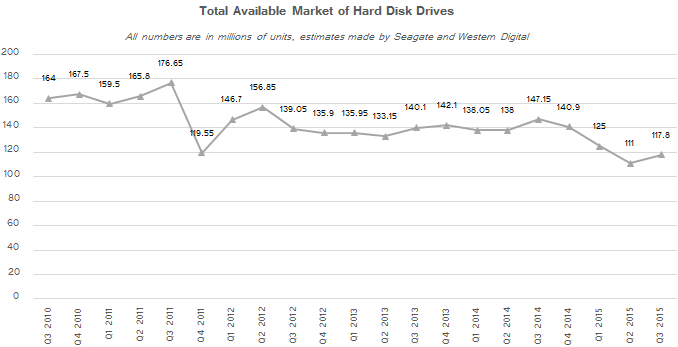
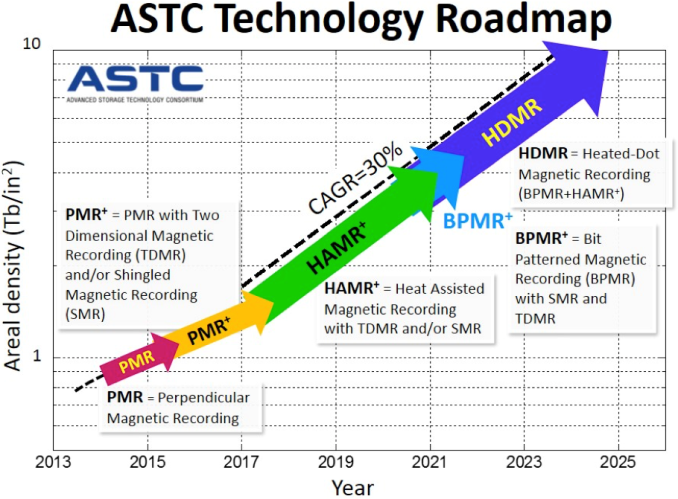
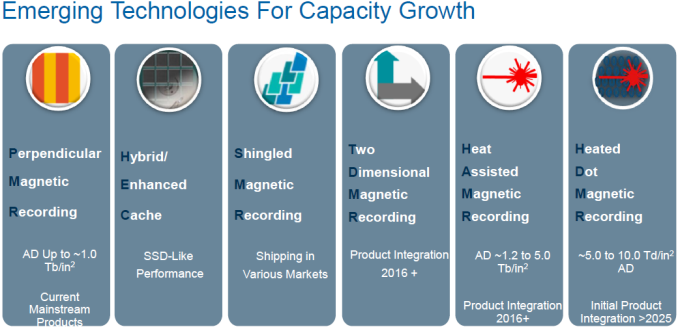
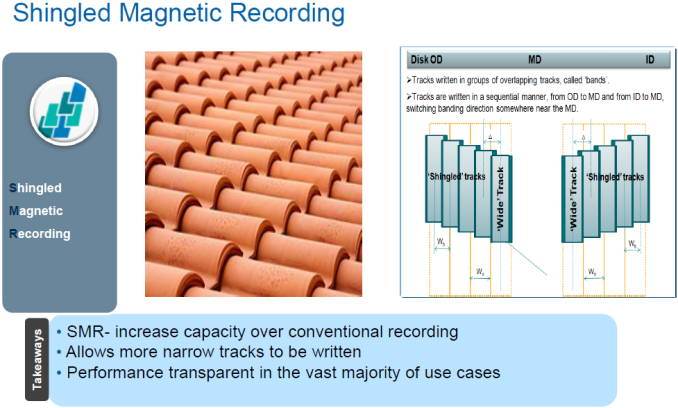
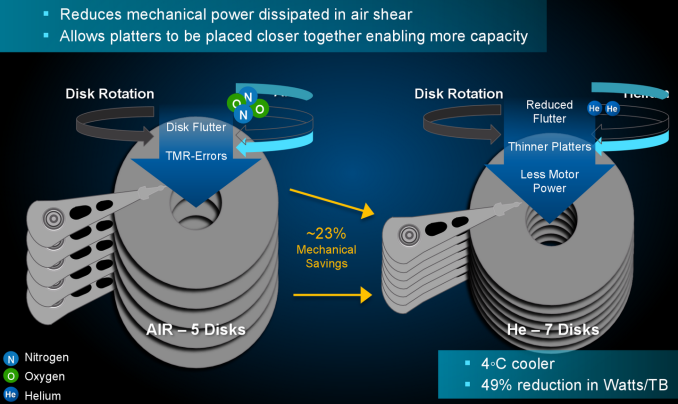
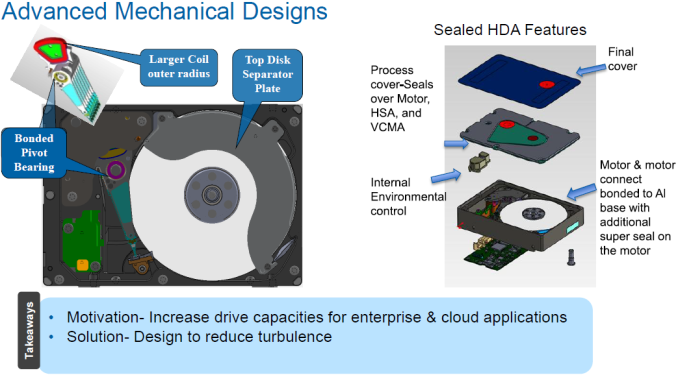
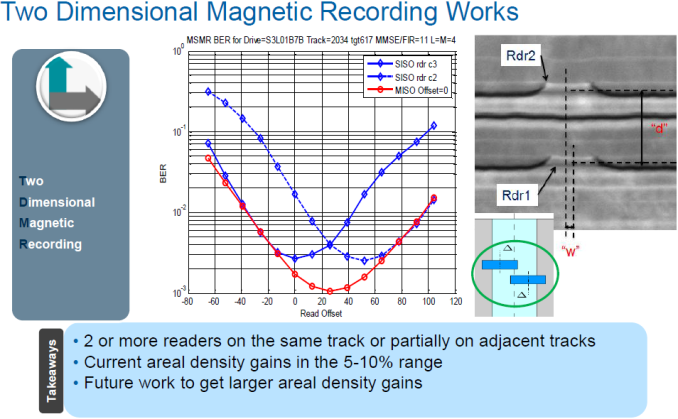
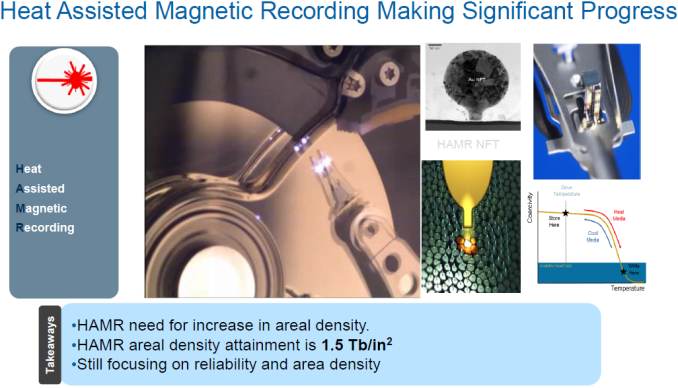
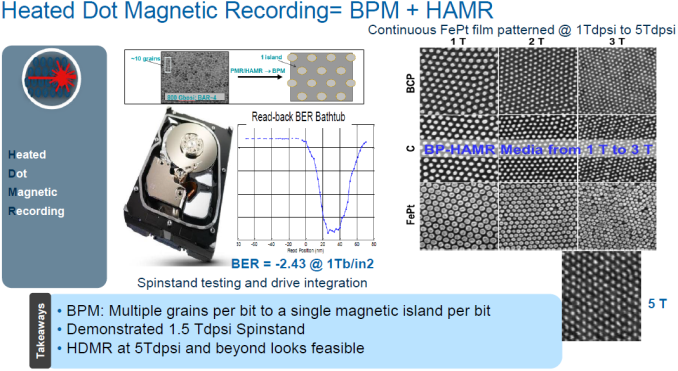








86 Comments
View All Comments
extide - Friday, December 18, 2015 - link
x2 there is some real content to this even, explaining the newer technologies. I had never heard of TDMR, BPMR, or HDMR prior to this article. I had only heard of PMR, SMR, and HAMR.More content is always good.
Ryan Smith - Friday, December 18, 2015 - link
"I'm wondering if this is some of the changes we are going to get as Anandtech's new owners cheapen the site. "Just so there's no confusion here, the site, its employees, and the content featured here are all under my control. As Dan correctly picks up on, Anton is a new hire for AnandTech, as I wanted to bring on someone to keep the pipeline busier for you guys so that you'd have more new things to read here every day. At the same time Anton wanted to write about hard drives - and specifically Seagate's recent comments - so I let him.
No element of this article comes from our "corporate masters." The writers I choose are writing about the subjects they want to write about (and I approve). We don't do sponsored content or any other system where someone above me tells us what to write. So if you have any comments about the content here - good or bad - I am the one responsible to the readers for the site and its contents.
TekBoi - Friday, December 18, 2015 - link
Thank you sir.Impulses - Saturday, December 19, 2015 - link
More pipeline, yay.alyarb - Friday, December 18, 2015 - link
Yes, we do need that clarification. These days Anandtech's bourgeois repertoire is closer to a cross between tom's hardware and GSM Arena than the Anandtech we remember from the 90's and 2000's. It's not entirely their fault because the authors and audience are, put simply, different now. Enough Rubicons have been crossed such that redemption to loftier realms of content and discussion are not realistic, but the readership is growing. Yes I want some parts of my childhood back, including the stroke of wonder I used to get from a new AT writeup. But that's too bad. You can never go home, but you can always shop there.For everyone's sake, yes. Let's make it clear that "the cloud" is simply dumbed-down marketable language that represents the trending migration of computer resources away from the user and into a managed, hosted environment. It represents an increase in total HDD shipments, but a decrease in consumer HDD shipments.
The Internet is getting bigger. More and more computers are being built and more hard drives to go inside them, they just aren't being stocked on shelves because they aren't being sold to John Everyman Smith. Somebody figured out they can make more money managing the systems and selling "whatever" as a service that you must buy subscriptions to access.
3ogdy - Saturday, December 19, 2015 - link
YOU ARE SO RIGHT. Those are EXACTLY my thoughts quite often when I visit this site.I really liked how articles were written and they had their own style - they used to know some more English (grammar) too. Reading used to be a smooth process of acquiring information and storing it with a certain flow. Reading current articles here feels like trying to solve a Rubik's cube. I have to overprocess sentences and mentally rearrange them.
Now, as I'm thinking of it, I believe this site (and the article quality check) has declined considerably since Anand left for CrApple. That must have been the moment things started to fade slowly.
Unfortunately, I see myself reading other websites and enjoying the content much more than the stuff on Anandtech. I used to visit Anandtech every single day, sometimes multiple times a day because they had me addicted. Now it's sadly become a "meh...nah".
Comparing past to present, it feels as if not only Anand's gone, but also Ian and some others who, frankly, were really talented at writing articles. Everyone can type on a keyboard, but not everyone can keep readers engaged. I remember those book-size reviews by Anand - I used to open the drop down menu and see tons of pages for a single article and my reaction used to be "damn, this thing is long, and I CAN'T WAIT to read every word of it". They were tech teachers and English teachers at the same time. This has turned into what we call "skimming" on this site. I'm sad to say this site shouldn't bear Anand's name. It's lost the Anand in Anandtech (take it as a pun too). It's just "ANother TECH review site". Maybe Antech would make more sense as a website title, given the current state this place is in.
I fully understand it when you say you want parts of your childhood back. The good times have apparently come and gone for this site. I guess sometimes you gotta lose what you have to understand its value.
jospoortvliet - Sunday, December 20, 2015 - link
Pfff, people will always complain. Still many anandtech pipeline articles are bigger and more thorough than full reviews on most other sites...nandnandnand - Friday, December 18, 2015 - link
Consumers have hard drives with large % of unused capacity. "The cloud" datacenters have to use the space they buy efficiently. If consumers aren't storing data locally, that means less shipments of HDDs.Zan Lynx - Friday, December 18, 2015 - link
Yes it seems people often forget that The Cloud stores data on hard drives.fanofanand - Friday, December 18, 2015 - link
Someone already touched on this, but I think performance is the bigger issue than density, to the consumer. As files become larger and larger (due to higher definition etc.) the need for larger storage may once again be relevant, but I think the biggest issue HDD's face today is performance.